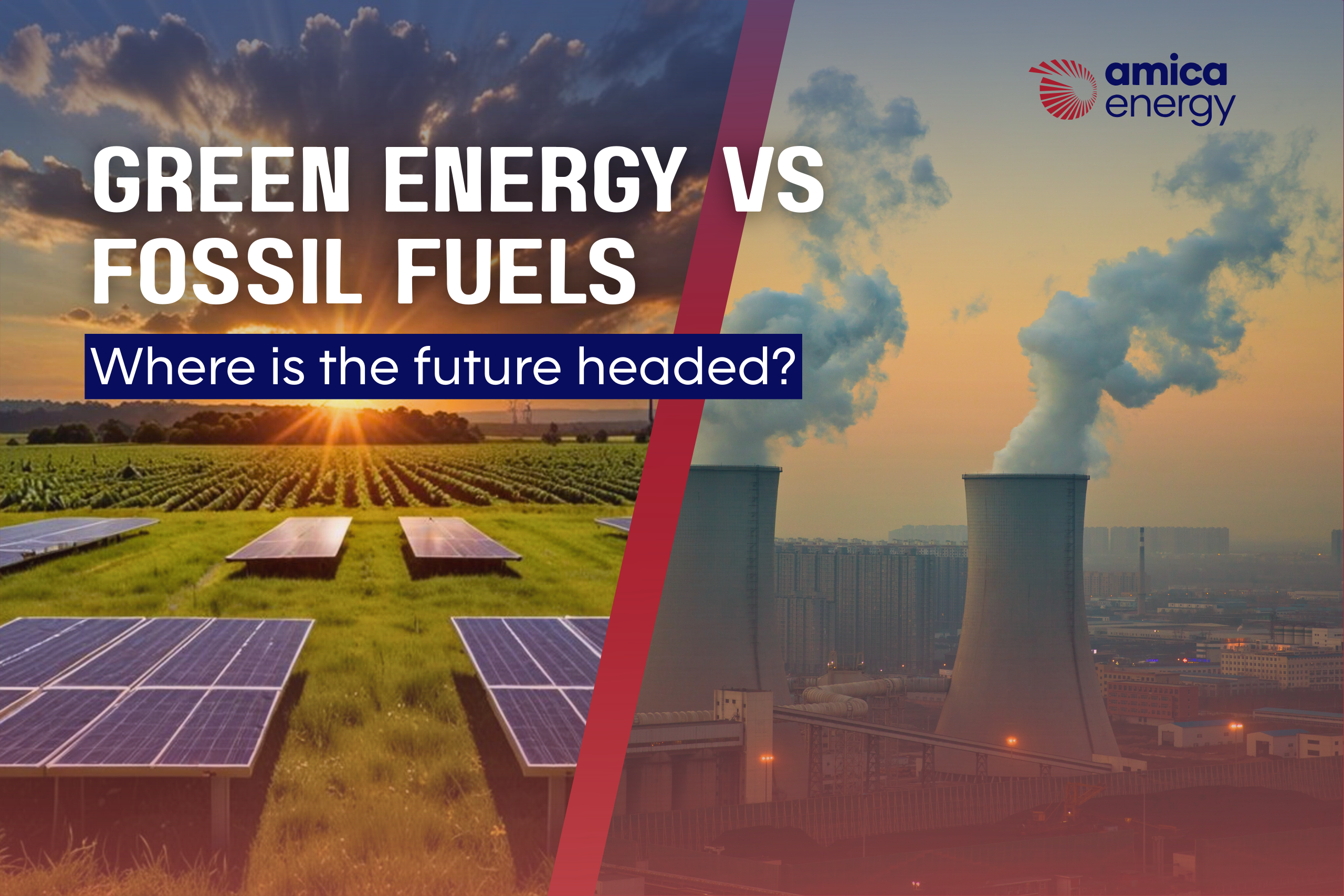
For decades, fossil fuels have fueled human progress! From lighting up homes to powering industries, oil, coal, and gas have driven economic growth across the globe. But the price? Our planet’s stability. Rising sea levels, extreme heat, melting glaciers, and unpredictable weather patterns are just some examples, but green energy can help change and reverse all of the negative impacts!
Can green energy truly replace fossil fuels, or is it just a hopeful dream?
Now, green energy is emerging as a powerful alternative energy source. Clean, renewable, and far less harmful to the environment, sources like solar, wind, and hydro are being adopted as the key to a sustainable future. But can these alternatives completely take over? Can they meet the world’s ever-growing energy demands without collapsing under pressure?
At the end of the day, the transition isn’t just about technology; it’s about survival! Climate change is no longer a distant threat, but we see it as a present reality. And the way we produce and consume energy plays a major role in what kind of world we leave behind.
In this blog, we’ll examine how fossil fuels have contributed to real-world disasters, and how green energy could’ve changed the outcome. We’ll also compare both sides (fossil vs green) on critical parameters like cost, emissions, and long-term impact.
Let’s find out how clean energy can help in the preservation of our Earth!
Two Climate Disasters that Could Have Been Prevented
Green energy is not just an alternative; it’s a climate stabilizer. While fossil fuels continue to pump heat-trapping gases into the atmosphere, green energy offers a way to neutralize this damage by reducing carbon emissions at the source. Its adoption has the power to slow global warming, regulate weather extremes, and protect ecosystems.
Sadly, we’re witnessing the price of delay. The Australian Bushfires (2019–2020) and the Pakistan Floods (2022) are two stark reminders of what happens when the world continues to depend on fossil fuels. If we had embraced green energy solutions earlier, the scale and intensity of these disasters might have been avoided.
1. Australian Bushfires (2019–2020)
The devastating fires in Australia burnt more than 46 million acres of land, killed over 3 billion animals, and caused severe air pollution in major cities like Sydney and Melbourne. Fueled by record-breaking heat and dry conditions, the fires were linked directly to a crisis driven by carbon emissions from fossil fuels.
Australia, despite being one of the sunniest continents, has long depended on coal-fired power stations. Because solar and wind energy have not been widely adopted across rural and urban areas, emissions have increased instead of being reduced over the years. This also increased the overall land temperature and prolonged drought conditions that feed the fires.
Solar-powered microgrids in fire-prone communities could have maintained electricity when the central grid collapsed. This can also result in aiding emergency response teams and saving lives.
2. Pakistan Floods
In one of the most horrifying climate disasters of the decade, a third of Pakistan was underwater in 2022. Monsoon rains, intensified by climate shifts, displaced millions, killed over 1,700 people, and destroyed crops and homes on a massive scale.
This catastrophe was also linked to global warming caused by fossil fuel emissions. The warming atmosphere held more moisture, leading to record-breaking rainfall. Despite contributing less than 1% to global emissions, Pakistan became a victim of decades of unchecked fossil fuel usage globally.
If clean energy is adopted faster across the globe, especially in major polluting countries, carbon footprints would be lower, global temperatures would rise slowly, and the atmospheric moisture buildup could be avoided
With the use of solar in remote villages, reliable electricity during a crisis can serve as a solid backup when national grids fail. This can enable better disaster management and timely medical response in the future as well.
Green Energy vs Fossil Fuels: A Comparative Breakdown
Source & Availability
- Green Energy: Comes from naturally replenishing sources like sunlight, wind, water, and the earth’s heat.
- Fossil Fuels: Derived from ancient organic matter like oil and gas, non-renewable and limited in quantity.
Environmental Impact
- Green Energy: Minimal to zero emissions, doesn’t pollute air or water.
- Fossil Fuels: Major contributors to CO₂ and methane emissions, leading cause of climate change.
Cost Trends
- Green Energy: Installation costs have dropped over 80% in the last decade. Operational costs are low.
- Fossil Fuels: Prices fluctuate with the market and geopolitical factors. Long-term costs are high due to environmental cleanup and health issues.
Infrastructure & Innovation
- Green Energy: Rapid advancements in battery storage, smart grids, and off-grid systems.
- Fossil Fuels: Infrastructure is well-developed, but it increases the carbon footprint.
Health Impact
- Green Energy: Clean air and water promote public health.
- Fossil Fuels: Linked to respiratory diseases, water contamination, and thousands of premature deaths annually.
Job Creation
- Green Energy: Creates more long-term, safer jobs in construction, R&D, and maintenance.
- Fossil Fuels: Jobs are dangerous, often short-term, and declining as automation rises.
Future?
- Green Energy: Can scale flexibly with local needs, especially in developing regions.
- Fossil Fuels require massive infrastructure and have a lot of international dependency.
In short: Fossil fuels may have built the modern world, but green energy can sustain it.
A Future Worth Building
The evidence is clear: green energy isn’t just an option, it’s a necessity!
As we face record-breaking temperatures, biodiversity loss, and rising sea levels, the call for a clean, renewable future grows louder. Transitioning to green energy can reverse decades of environmental damage, revive natural habitats, and give Earth a chance to breathe again. The question isn’t whether green energy can replace fossil fuels, but when will we let it?
The future is green, and the time to act is now.
By partnering with pioneers like Amica Energy, you can play your part and lead the shift toward sustainability. Let’s build a cleaner tomorrow!
